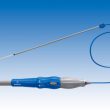Two recent articles featured in JACC Cardiovascular Interventions showed that short term (at 30 days) outcomes of patients treated with the next-generation self-expanding Medtronic Evolut R valves could present several advantages compared to the original CoreValve, including recapturability. Both analyses reported similar rates of all-cause mortality and stroke. The study carried out by Dr. Jeffrey Popma as...
How Important Is Controlling Risk Factors for the Prevention of a Stroke?
There has been a recent decline of about 20% to 40% in the incidence of cerebrovascular accidents (stroke). Although this is attributed to the improvement of risk factor control, the reason behind it is not utterly clear. This study estimated the impact of modifiable cardiovascular risk factors on the incidence of stroke between 1995 and...
Ticagrelor Versus Clopidogrel in Symptomatic Peripheral Vascular Disease
Peripheral vascular disease is considered as a manifestation of systemic atherosclerosis associated with adverse events, both cardiovascular and related to the lower limbs. Previous studies showed that clopidogrel monotherapy is associated with lower risk of events when compared to low doses of aspirin. Such is the rationale behind this article comparing clopidogrel and ticagrelor...
Myocardial Revascularization Surgery: One or Two Internal-Thoracic-Artery Grafts?
The use of both internal thoracic (mammary) arteries for myocardial revascularization surgery might improve long-term outcomes, compared with the use of a single internal thoracic artery. Patients scheduled for myocardial revascularization surgery (only multivessel procedures; combined valve procedures were excluded) were randomized to receive a single internal-thoracic-artery graft (internal thoracic artery for the anterior...
Carotid Revascularization After Stroke: When Should It Be Performed?
In 2006, the American Heart Association guidelines recommended that carotid revascularization be performed within 2 weeks of stroke based on data from 2 randomized trials on carotid endarterectomy. This study aimed to determine whether the time between the event and revascularization has decreased after these guidelines were issued, and the proportion of patients receiving some sort of revascularization (endarterectomy...
TAVR: Transcarotid Access as a Valid Alternative
Courtesy of Dr. Carlos Fava. Transfemoral access is the first choice for transcatheter aortic valve replacement (TAVR). However, this approach is not feasible for a progressively larger number of patients, which establishes the need to search for alternative accesses. Between 2009 and 2014, this study enrolled 174 patients who underwent TAVR and were unsuitable for transfemoral...
FUTURE: Mortality Increase in the FFR Arm, Real or Casual?
The FUTURE study, testing the utility of functional revascularization by measuring the fractional flow reserve (FFR), was halted early by its safety committee due to an increased mortality rate at 1 year among patients guided by FFR. In this unexpected unprecedented outcome, 17 patients in the FFR-guided group died at a year of follow-up, compared with 7 patients...
More Evidence For Left Main PCI
Courtesy of Dr. Carlos Fava. Left main coronary artery disease (LMD), has historically been treated with myocardial revascularization surgery (CABG), but for some years now, and with the development of new drug eluting stents (DES), percutaneous coronary intervention (PCI) has been gathering support in this challenging territory. The study analyzed the SYNTAX and PRECOMBAT...
When to Intervene a Symptomatic Carotid Stenosis?
Guidelines recommend that carotid endarterectomy be performed within two weeks of stroke in patients with symptomatic carotid stenosis. Because a Swedish registry study showed patients treated within the first days after a transient ischemic attack or stroke are at increased risk of death and perioperatory stroke, this study aims at verifying this risk in...
Coronary Perforation in PCI: Associated to Negative Outcomes
Courtesy of Dr. Guillermo Migliaro. Coronary perforation (CP) is a rare but serious complication of percutaneous coronary intervention (PCI) with an estimated incidence of 0.5%. Arterial blood entering the pericardium may cause a rapid elevation of intrapericardial pressure and collapse the right cavities (tamponade) creating hemodynamic compromise. Historically, surgical drainage has been the...









